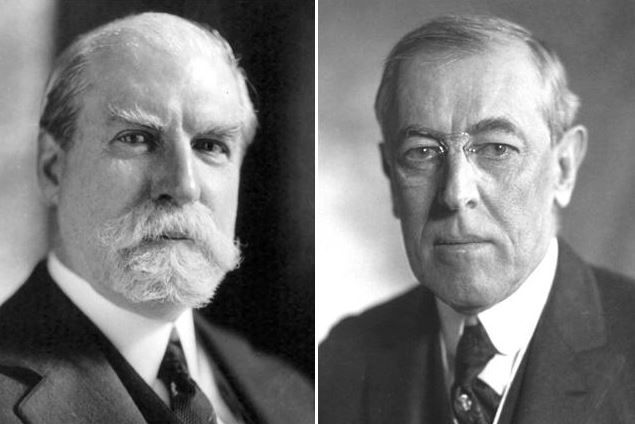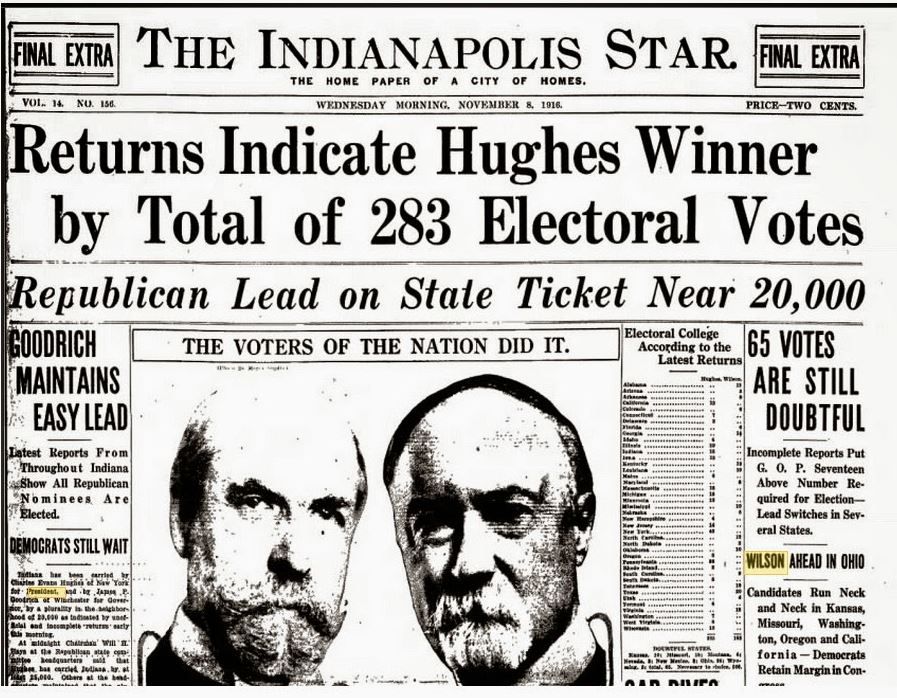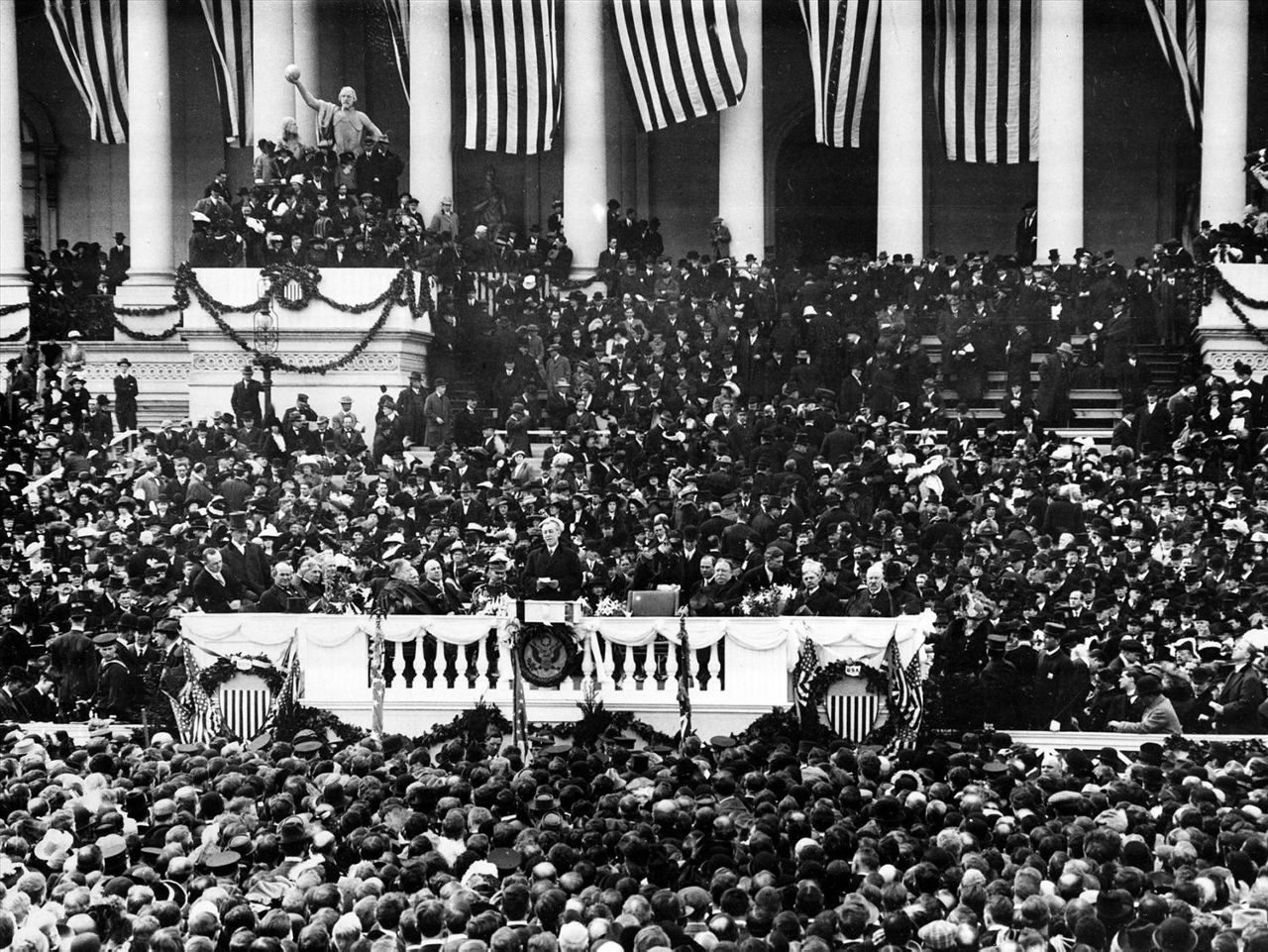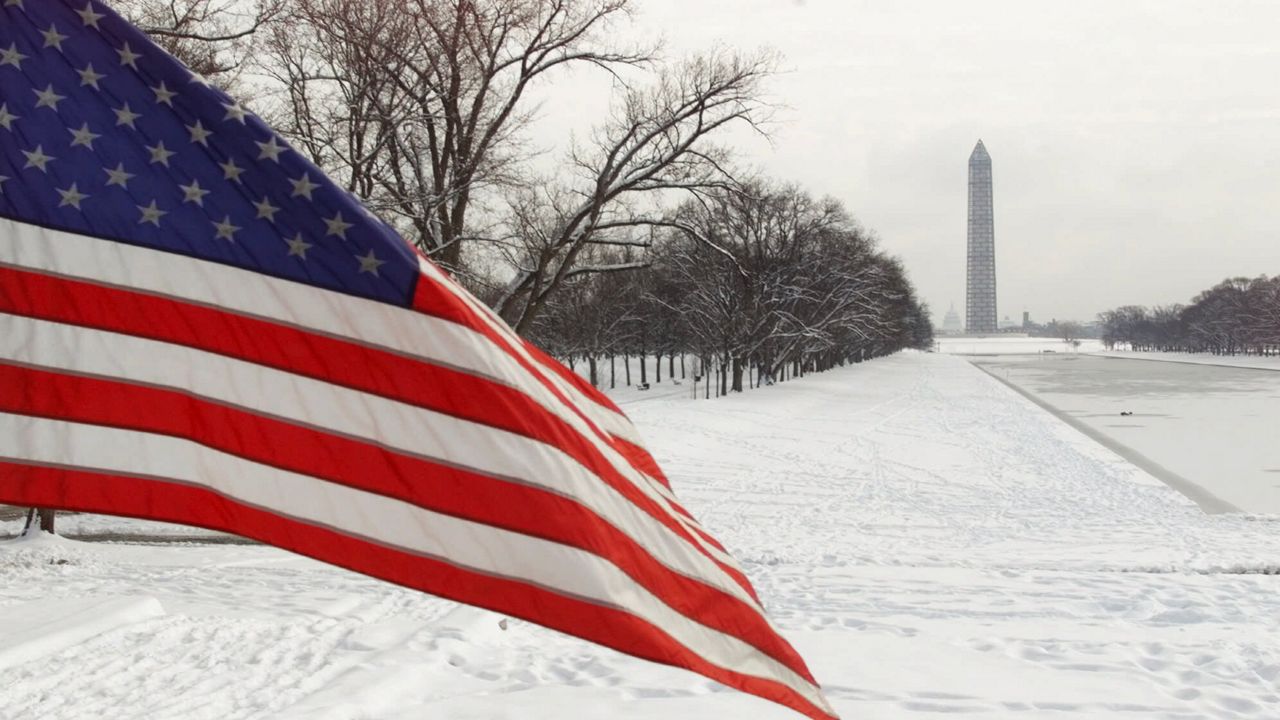The year was 1916. War was breaking out across Europe as an anxious America looked on.
With the U.S. gearing up for a contentious presidential election, an early November snowstorm nearly changed the outcome.
It's just one of the ways that weather (or lack thereof) shaped political history.

First-term president Woodrow Wilson, a Democrat, was in a battle for reelection against his Republican opponent, Supreme Court Justice, and former New York Governor Charles Evan Hughes. The stakes were high.
Wilson, running on his since rebooted slogan of 'America First', hoped his stance of neutrality in the war would win over voters fearful of conflict.
Hughes meanwhile was relying that the newly consolidated Republican Party would be united enough to oust Wilson from the White House.
According to Sara Georgini, historian and series editor for The Papers of John Adams at the Massachusetts Historical Society, this was a particularly close race for an incumbent president.
“Incumbency was an advantage for Wilson," said Georgini. "But in his second time out, he had to contend with the strength of a newly reunited and reenergized Republican Party.”
Meanwhile, in the West, an early season snowstorm was taking shape. Moisture streamed in from the Pacific as an area of low pressure moved onshore.
With enough cold air in place, snow was the dominant precipitation for the Sierra Nevada, a mountain range that spans interior California.
Snow began to coat the mountains and nearby towns with just days to go before the election. A Democratic stronghold at the time, the voters in the region would be critical for Wilson if he were to carry the state.
When the snow finally came to an end, people living in Lake Tahoe measured over a foot of fresh powder. Nearby Soda Springs recorded two feet.
Following the storm, conditions dried out for the nearly 10,000 residents in the Sierra and surrounding foothills. While temperatures plunged into the teens the morning of the election, most areas rose above the freezing mark during the afternoon, helping to melt the fresh snowpack.
On November 7, 1916, just a day after the snow tapered, Americans headed to the polls.
As states tallied their results into the night, it appeared Hughes may have pulled off the win. In fact, the race was so close that several of the nation’s newspapers declared Hughes the apparent winner the following morning.

Not so fast, however.
Over the next day, as workers counted more ballots, it became clear that California would be the key to the presidency.
As the counting continued, Hughes' lead in the state narrowed. It soon became evident that Wilson would muster enough votes to carry the state. Out of 3 million residents, Wilson declared victory by a margin of little more than 3,000.

The implications of the election were great.
Despite his pledge to keep America out of the war, Wilson became increasingly convinced that the United States did need to intervene.
Less than a month after his second inauguration, in an address to the nation, Wilson laid out the case that strength was needed to keep the world safe for democracy. Congress would declare war the following week.
“One reason that historians love to read, write, and talk about presidents is because there’s a blend of success and flaw." said Georgini. "He [Wilson] will serve as president from 1913-1921. What I find most striking about him is there’s a plus and a minus, always. He championed America’s role as the torchbearer of the world. Wilson’s lasting imprint of the presidency is that we must all work to make the world safer for democracy. That’s the big takeaway from the Wilson presidency.”
If Hughes had emerged victorious, Georgini says, “It’s hard to know how things might have gone, but it does send a strong message about the U.S. and how we’re re-thinking neutrality.”
Had Mother Nature decided to drop such a significant snowfall a day later over Wilson's stronghold in the Sierra, enough voters may have never ventured to the polls and America's history, from domestic policy to our role in World War I, may have looked very different.
Check out this story on how a force of nature turned Alexander Hamilton into a political force.
Check out this story on how a tornado saved our nation's capital during the War of 1812.
Check out this story on whether or not weather killed the ninth president of the U.S.
Check out this story on how a flood led to Herbert Hoover's ascension to the presidency.



